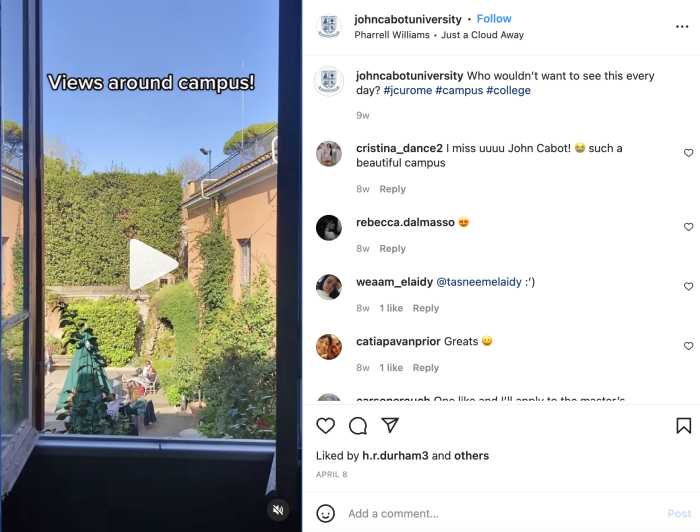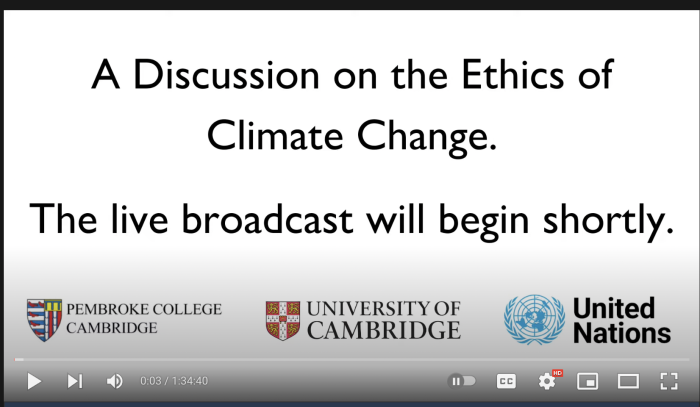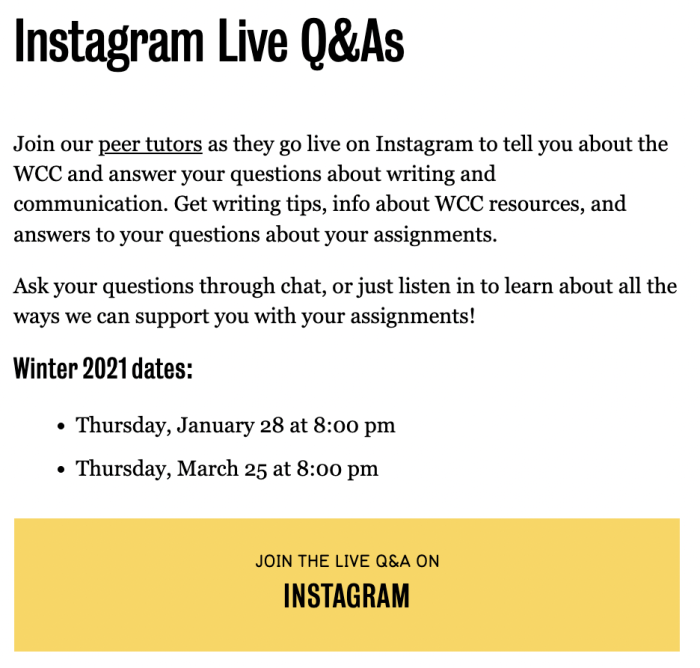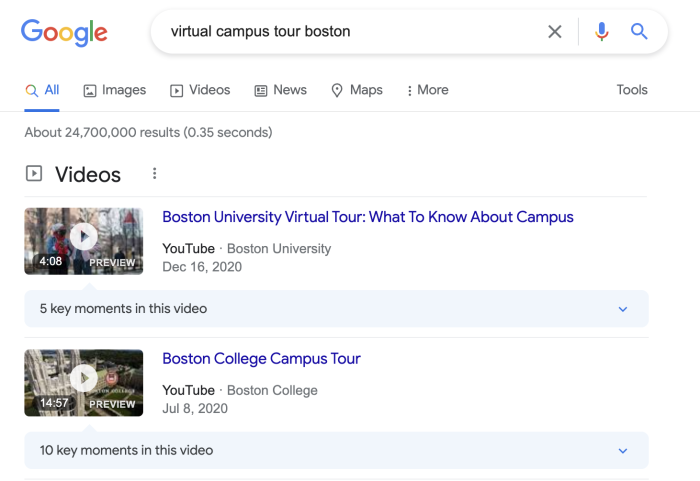Nowadays, prospective students don’t just want to read about their dream school–they want to see it. To stay relevant, schools need to satisfy this curiosity and adopt innovative approaches to market the experience on their campus. This is where a video content marketing strategy comes in.
Video content marries the informative nature of text with the aesthetic power of images. The result is a more stimulating and memorable means of reaching your prospective students. Whether you’re looking to market your next open house, expand your pool of international applicants, or boost enrollment for a specific program, video content can elevate your school’s digital strategy and bring it that much closer to its goals.
The best part about a video strategy is that you don’t need specialized equipment or a videographer to get it up and running. Schools can find opportunities to film in and around their community, relying on media or design departments as well as current students to get started.
If you’re new to video, here’s a closer look at how you can start getting creative with your school’s video content marketing strategy.
Identify the Audience for Your Video Content
Social media platforms are a big resource for sharing video content, with more than half of marketers saying that video is the most valuable type of content for achieving social media marketing goals. This kind of social content will increase awareness of your brand and help to move prospects to your school’s website.
The kind of video content that you put on your channels will heavily depend on the primary audience of each channel. For example, the largest age group for LinkedIn, Instagram and Facebook is 25-34, while TikTok is most commonly used by those under 19 years old.
Knowing which audience is on what platform, you can begin to think about which of those viewers your school specifically is trying to reach. Perhaps, you’re a trade school targeting high school graduates, or a career college targeting adults looking to upgrade their skills for new employment. Either way, before you put your video content marketing strategy into motion, ask yourself which topics are important to those prospects. This will help you plan out the type of content they would want to see in a video. Examples include:
- Videos explaining the application process
- Introductory videos for specific programs
- Industry-relevant News
- Student testimonials
You also need to think about what kind of content is suited to each channel. YouTube is currently the most widely-used platform among video marketers, used by 88%–but there are many more video platforms that your school can and should be taking advantage of. Luckily, social media platforms today offer unique features that cater to different types of video content. For example, Instagram stories can promote upcoming events, while TikTok is a great option for snappy short-form videos showing personal anecdotes.
Once you know how to leverage social media channels to their full potential, you can start applying a more effective video content marketing strategy.
Make Video a Part of Your School Community
Any video marketing strategy needs a wealth of content to launch effectively and begin to drive engagement. You’ll want to ensure that you have enough content in the bank to supply your school’s channels on a consistent basis. However, remember to keep the original goals of your video content marketing strategy in mind; you don’t want to film just anything. Video content should always be targeted to reflect the unique selling points of your school.
The best way to do this is to identify opportunities to film videos in and around your school’s community. Your campus will offer a wealth of resources for video content–and you can guarantee that the images and audio will be unique to your institution. Some excellent topics for higher education video marketing are virtual campus tours, individual acceptance videos, introductions from faculty, and event highlights.
For example, John Cabot University created an Instagram video to showcase the unique scenery of their Rome campus.

Source: Instagram
You can also use video to engage with important research topics. Take the opportunity to record any upcoming conferences or events that faculty members are participating in to demonstrate your school’s reputation in the academic community.
For example, The University of Cambridge live-streamed an event in which members took part in a roundtable discussion with other professionals in the field. For prospects interested in attending a top research institution, this kind of content allows them to engage with the findings of the university.

Source: YouTube
These kinds of videos are a great way to show off your community and give prospects an insight into the values, mission, and experience of your school.
Recruit Current Students to Develop Your Video Content Marketing Strategy
Some of the most effective forms of video content marketing are the first-hand stories found on your school’s campus–particularly those of current students. Interested applicants are most likely to trust and connect with video content that leads with the experiences of your student body. After all, they are the ones who have gone through the admissions process and lived life on your campus.
The University of Bristol’s YouTube channel features a series dedicated to student advice. Each video is led by a current University of Bristol student and covers information that is relevant to applicants or incoming students.

Source: YouTube
Social media takeovers from student ambassadors are another way to supplement your video content. TikTok is a great platform for current students to get involved and create short videos with minimal setup or equipment. Current students can lead campus tours, go behind the scenes of clubs and activities, or interview their fellow students.
“Day in the life” videos created by students, such as the one shared below by UBC’s TikTok account, are another popular trend that you can hop on board. The casual nature of these videos allows prospects to get to know your school and its community beyond its official branding.

Source: TikTok
One of the reasons why video content is so valuable is that it’s a truly personalized form of marketing. Videos of your campus, faculty, students, and clubs all offer prospects a unique image of your school–distinguishing your institution in a way that is hard to do with words alone.
Create a Posting Schedule
Once you’ve got your content ideas down, you need to set up a video publishing schedule to put them into action. Whether you’re delivering video content through email campaigns, social media channels or your school’s website, it’s important to create a plan to post content to the right platform at the right time. Video is a highly engaging marketing tool–but it only works if you maintain a consistent effort to engage new prospects.
The frequency at which you post depends upon the channel you’re using. As a general rule, consider starting with the following schedule:
- Youtube: 1 video a week
- Instagram: 1 to 3 reels a week
- TikTok: 4 times a week
- Facebook: 1 to 2 videos a week
Consistency is particularly important when putting your live streaming strategy into play. If you’re covering key events, such as sports games, student panels, or faculty conferences, make a note of the date and time when you’ll go live and keep to the schedule. This will not only ensure that your school is on track with its video production but will also give you the time to market important live events, like the ones advertised below on the University of Waterloo’s website.

Source: University of Waterloo
By creating a schedule for your video content strategy, your school can ensure that it seizes prime opportunities for filming in and around campus, and is able to market those videos to boost viewer engagement.
Lead Prospects to Take the Next Step
According to research, 86% of marketers say that video has been highly effective for generating leads. But to achieve this, your video content marketing efforts must lead somewhere.
While video is an effective tool for increasing brand awareness, ultimately, it should align with your school’s overarching recruitment goals: to boost admissions applications. Therefore, the objective of your video marketing strategy should be conversions.
To lead prospects to take the next step in their recruitment journey, your videos should contain a few key elements that encourage conversion. A call to action (CTA) in the video is the most obvious example. This is a short statement that prompts viewers to explore your school’s content further. A CTA may lead prospects to a page on your website, encourage them to sign up to your mailing list, or register for an event.
Example: The University of Sydney created a YouTube video to promote its Info Day. The description box contains the CTAs “Find out more” and “Subscribe to our channel” with relevant links to the school’s website and social media.

Source: YouTube
As in the example above, it’s also worth including important resources such as web links and dates in the content of the video.
Boost the Visibility of Your Video Content Marketing Efforts
As with any form of web content, getting views is half the battle. That means you’ll need to apply some common SEO tactics to your video content marketing strategy to ensure that prospective students and their parents find your videos when browsing online.
The easiest way to optimize your videos is to insert the right keywords in the title, description, and tags. Especially when it comes to YouTube videos, an SEO-optimized title will help your content rank in Google search results; prospects will be able to discover your content while performing general research outside of specific social media platforms.
Example: The videos below contain relevant keywords in their title to match the search “virtual campus tour Boston.”

Source: Google
Additionally, consider boosting your content with video ads. Social media platforms like Instagram, Facebook, and YouTube have ad features that allow you to target specific audiences, whether that be parents or prospective students. Many ad features also let you view performance metrics for your videos so you can see which types of content are garnering the most engagement.
If you’re wondering where to start, Facebook ads are easy to create using Facebook’s video creation tool, which allows you to add CTAs, logos, and text to your school’s ads. At the same time, you can enjoy less competition and a lower cost per view with YouTube ads.
As schools get more creative with the kind of content they’re putting out, we already know how impactful video is for higher education marketing. But with so many platforms, features, and styles to explore, a video content marketing strategy is essential to ensure your school is making the most of this tool to support its recruitment goals.







